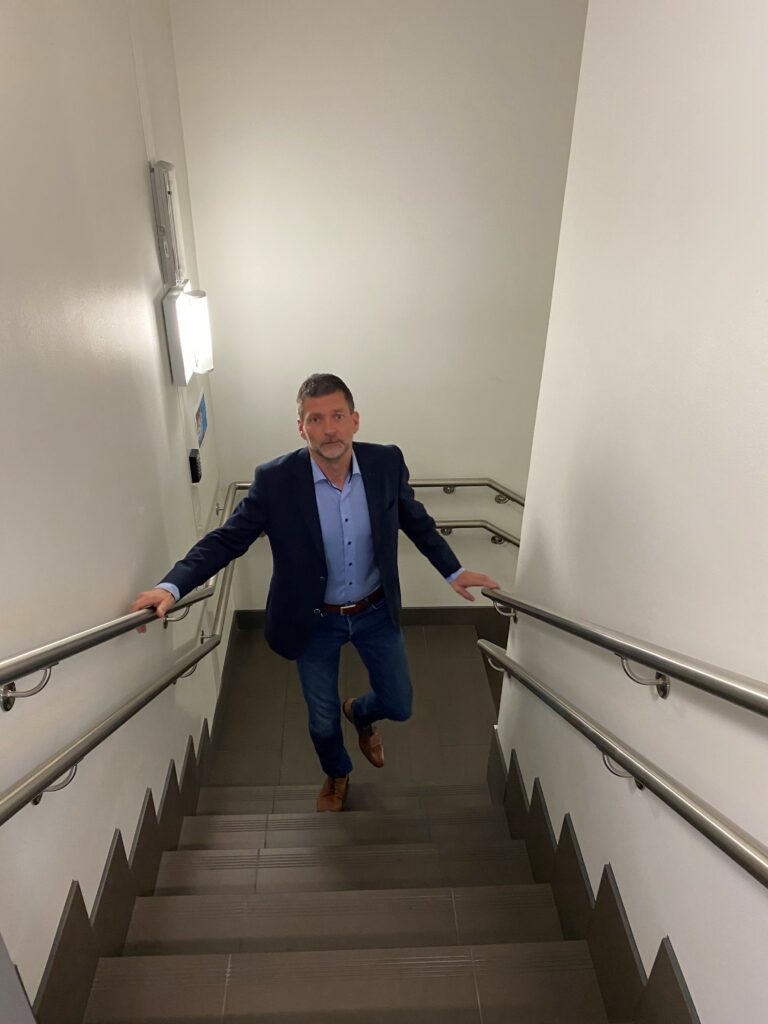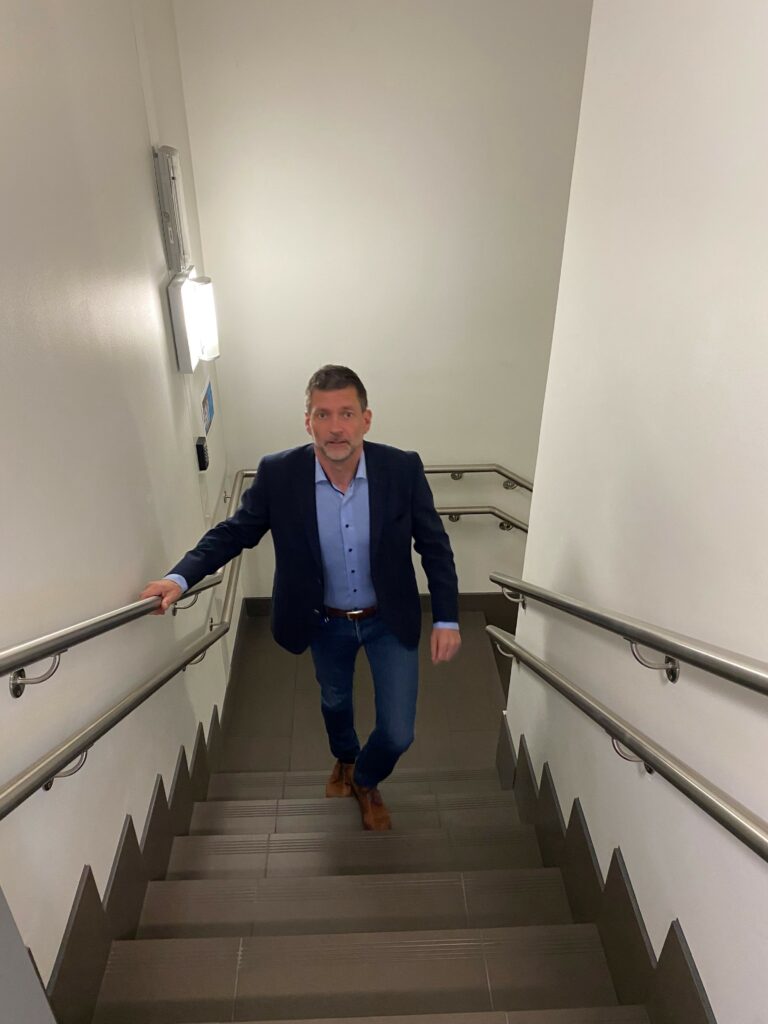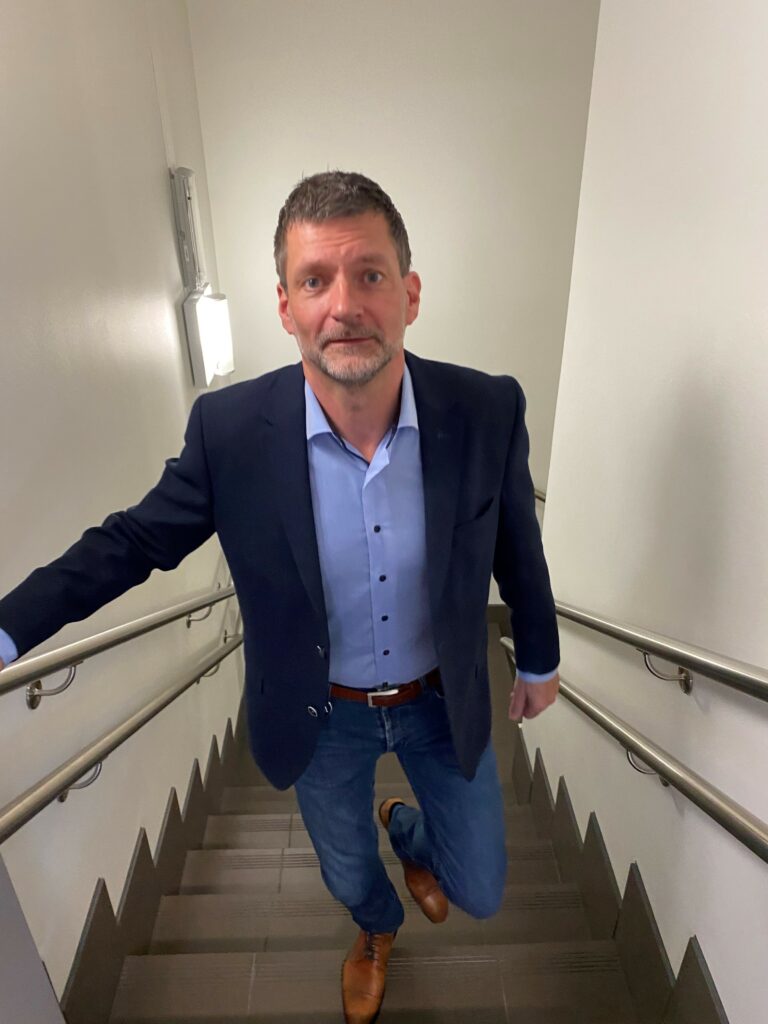15.06.2022
He is responsible for modifications to the facility
Kjetil Hantveit was involved in building the plant and made a come-back in 2014 in the position of Modification Manager.
Technology Centre Mongstad (TCM) has a 10-year anniversary in 2022. We celebrate ourselves with interviews with people who in various ways have had impact on the business in these years.
– Why did you apply for a position at TCM?
– I got a phone call from former project leader Sjur Brandtun to take the position as leader for modifications at TCM while I worked on a project for Equinor in the North Sea. It was tempting, and not long after I recieved a proposal for a contract. The motivation for saying yes was that I knew the skills at TCM from the construction period, and knew I got to work in teams with good people. In addition, there was also jubilation at home since this meant that I would get a job within normal working hours. Travel from the farm on Hantveit in Gulen on the north side of Fensfjorden has never been a problem. February 1, 2014, I was ready for duty.
– How was your first meeting with TCM?
– I remember it was nice to greet old acquaintances in the modification department and those who had started there after the facility was put in operation. They took me on a tour of the plant and explained what had happened in the first two years. Then we sat down and discussed the tasks we had ahead of us. It was a good day for a «half-newcomer».
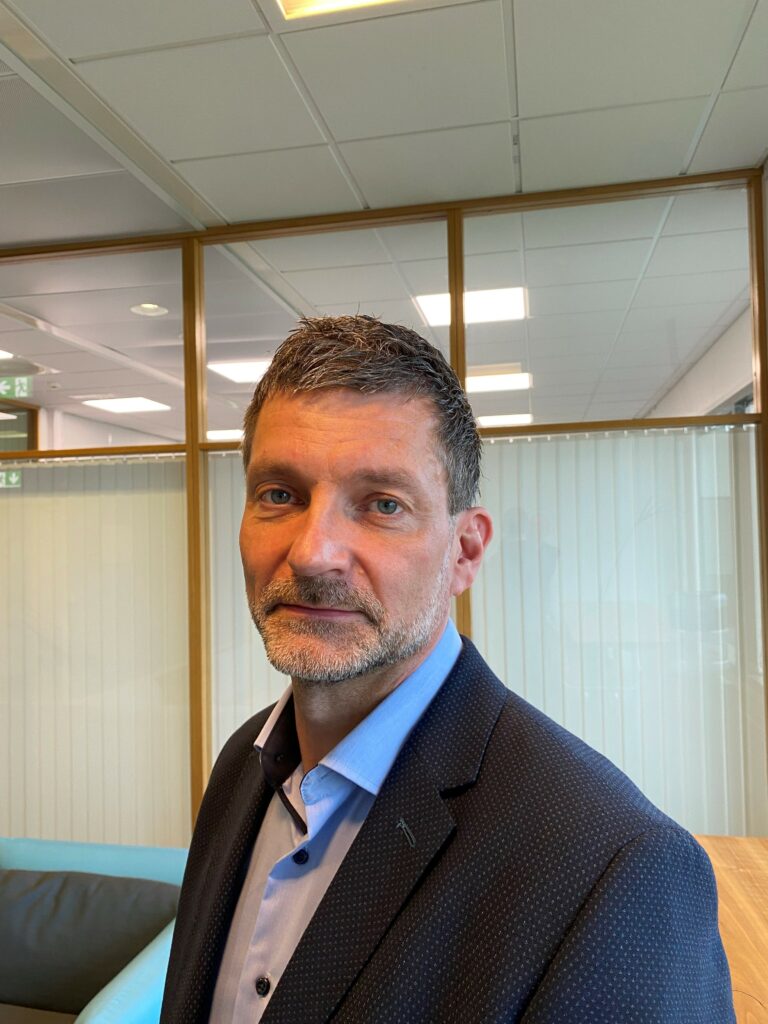
Kjetil Hantveit leads the work with modifications at TCM’s plant and is member of the leadership for the company.
– What will you highlight as the most rewarding and interesting work you took part in at TCM?
– At TCM, every activity and test campaigns live their own lives. What has made the job interesting is that we have managed to make the adjustments to the plant that are necessary for every new technology that has been tested. Thus, there will be groundbreaking work every time, and I can honestly say that no one has left here without having been allowed to do what they had planned before they arrived. Sometimes problems arise that are solved ad hoc. We manage to solve them with strong will and good effort, and excellent collaboration with the technology suppliers. That they get to test what they have to within their schedules, and are satisfied with the results, is incredibly satisfying both for me and the entire TCM team.
– Are there projects or events you remember back with special joy?
– In the first operational period, there were challenges to test with both flue gas sources from the refinery in the amine plant, ie both flue gas with about 3.5 percent and about 20 percent CO2 content. We thought that installing a new large filter allowing filtration of particles before the gases entered the process would be a good solution, but the professional bodies we sought advice from were sceptical. They thought the filter would clogged up quickly. But despite that, we chose to go for the solution we had in mind. We first did a pilot to see how it went, and it worked well. Then we were happy – and a little proud. The filter we obtained six years ago is still in use today.
– What do you think is most challenging about your work at TCM?
– For me personally, the job at TCM has been a long professional upswing. But for TCM as a company, it is a problem that the funding allocated for each operating period are limited to short periods. This makes it difficult to plan activities far in advance. It also makes it demanding to recruit new people and keep the ones we have. For TCM, it is also a challenge that the plant is no longer new but has been in operation for ten years. When operations are only guaranteed for three years in a row, it will be difficult to get approval for technical upgrades. They are needed for TCM to maintain its position as a world leader in testing CO2 capture technologies.
– When you tell your friends and acquaintances about the business at TCM, what do you emphasize as the most important utility value?
– Then I say that as long as one believes that the changes in nature and the environment are created by man, then we must use everything we have in the toolbox to stop development. Carbon capture and storage is one of these tools. The fact that we in Norway have the world’s largest test centre for technologies and cutting-edge expertise in the field is not only of great value nationally – but for the global climate challenge.
So we in our country throughout all ten years have struggled with the fact that the plan for TCM was to get full-scale purification of CO2 from the thermal power plant at Mongstad, of which there was none. Exactly that has not taken hold in the same way internationally. The ones I surround myself with know about and understand what we are doing. But I hope the marking of ten years of operation can make it better known among most Norwegians that testing at TCM is a prerequisite for safe capture of CO2.
– What is your wish for TCM the next ten years?
– Until now, TCM has been a “catch and release” facility. My wish is that in the years to come we can also take CO2 which are caught and make use of it as an input factor in various industrial productions. Here, with our expertise, we can be a driving force and catalyst to help those who have good ideas. At the same time, testing of new technologies must continue. As in the automobile industry, we work to reduce emissions and present increasingly energy-efficient solutions, and that takes time. TCM has such an absolute future ahead of it!
Name: Kjetil Hantveit
Age: 45
Education: Certificate in electrical engineering, as well as ambulance driver
Marital status: Partner, three children
Affiliation with TCM: Responsible for mechanical completion of the facility 2009 – 2011, Manager of the modification department 2014 – , member of the leader group 2020 –
Present position: Modification Manager at TCM, hired from Omega Power
– When you generally look back on 10 years of business at TCM, what do people that worked at TCM or still are working there have particular reason to be most proud of?
– I mean one should be careful about feeling successful. Success is best measured in praise from others. But that we have managed to get companies and research institutions from large parts of the world to come to Mongstad is an achievement. This is not only due to the fact that the test facilities are good, but that they are received by people who really know what they are doing and help them further along the way. One should keep in mind that even though the test campaigns are subsidized by the owners of TCM, it is not free to come here. Norway is a high-cost country, and the expenses they have to get equipment and personnel to Mongstad are not small. The fact that they are still investing resources in testing and cooperation with TCM in the US, Asia and Europe is proof that we are useful and have good offers.
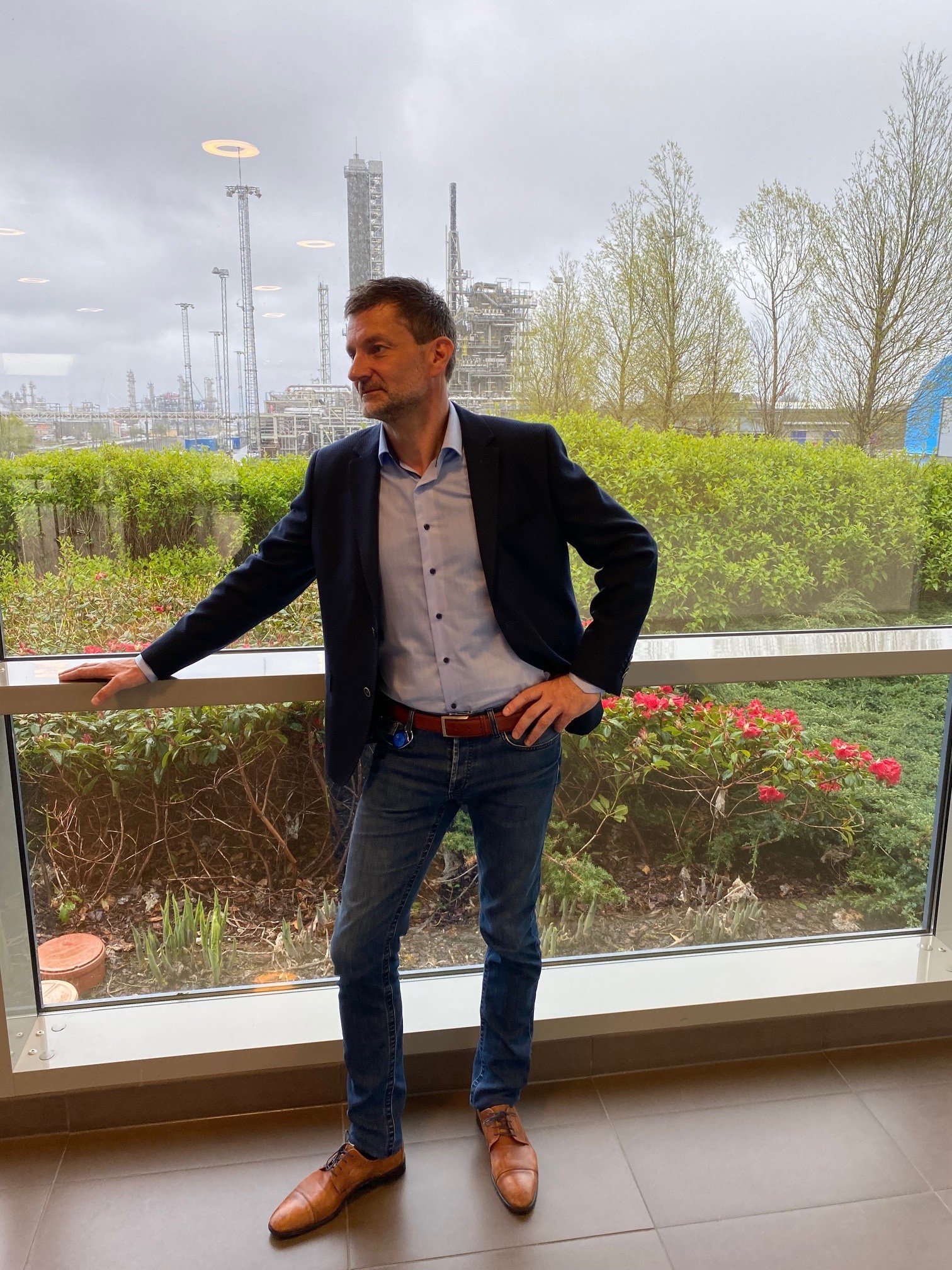
Kjetil Hantveit has busy days at TCM.


